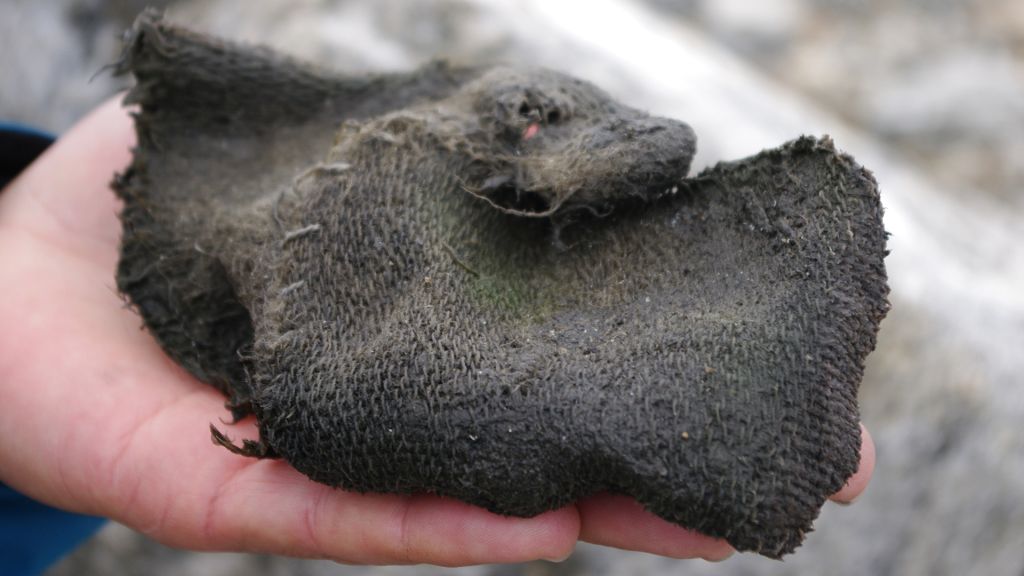Zajímavé čtení, díky za článek.
Hundreds of perfectly preserved artefacts uncovered by melting glacier in Norway
Categories: Finds and rescue research abroad , Nálezy nejenom s detektorem ve Skandinávii
Archaeologists recently published a study documenting rare artifacts from a long-forgotten trail in a mountain pass beneath the melting Lendbreen glacier in Norway. Among the many items found were thousand-year-old skis, arrows, tools, clothing, and the remains of a dog complete with collar and leash.
With the changing climate in Norway, the glacial areas are diminishing, constantly bringing new artifacts hidden for centuries or even millennia. The melting of the Lendbreen glacier has recently revealed hundreds of artefacts from the Viking Age, the Roman Iron Age and even the Bronze Age. Remarkably well-preserved artefacts lined the once busy pathway, which yielded a variety of clothing, gloves, shoes, over fifty pieces of fabric, a walking stick with a runicinscriptions, a knife, horseshoes, riding equipment and a sledge, as well as various craft tools, animal (mostly horse) remains and many other items of informational value...
The still frozen part of the glacier covers an area between 1 690 and 1 920 metres above sea level; however, the mountain pass rises up to 1 973 metres above sea level. The first evidence of the hidden trail was observed in 2011, when the melting glacier revealed stone cairns built as signposts to identify the route. Between 2011 and 2015, collection and documentation of the glacier-issued artifacts took place, which have endured in perfect condition due to the dry, freezing climate.
"The preservation of the ice objects is simply astonishing," study co-author Espen Finstad, an archaeologist at the Ministry of Cultural Heritage in Lillehammer, Norway, said in the study. And he added that in 2019, research has uncovered even more interesting finds, including the remains of leashes and dogs, or "a wooden box with the lid still closed."' But these are the subject of an ongoing study and will probably be presented next year.
According to the study, published April 16 in the journal Antiquity, the finds are an interesting testimony to the daily life of the people of the time and highlight the importance of mountain roads in the region. "The Lost Mountain Pass is a dream discovery for us - glacial archaeologists -" said the study's lead author Lars Pilø, director of the Glacial Archaeology Programme (GAP), in a statement. The program works in collaboration with the county council in Innlandet and the Museum of Cultural History at the University of Oslo in Norway. GAP restores, conserves and identifies historical artifacts from Norway's disappearing glaciers.
The dead animals and broken tools were likely abandoned by travelers, left in place, though the study admits they may have simply been lost. Carbon dating of approximately sixty objects confirmed that the pass was actively used from 300 to 1,500 AD. Some items, such as skis and arrows, date to the Bronze Age (1,750 to 500 BC), and a few artifacts were even older. However, the largest number of artefacts were dated around 1000 AD, so researchers believe that the mountain pass was busiest during this 'Viking' period.
Unlike many other Alpine or Himalayan passes, this route was the busiest in winter, because it must have been very difficult to navigate the route when the rocks were snow-free, the study says. The researchers also reconstructed how the route changed over time. If it was almost a road in the Vikings, it gradually degraded and by the 16th century at the latest it was abandoned altogether. Probably due to melting associated with climate change, economic upheaval and the arrival of pandemics from Europe.
Roman Nemec

Birch wand for spinning wool - dated to approximately 800 AD

Juniper wood tool - prevented kids or lambs from drinking milk that was intended for human consumption

Gloves made from various pieces of cloth - dated to the ninth century.

Artifacts

Sources: foxnews.com, livescience.com, arch.cam.ac.uk, cambridge.org
The article is included in categories:










